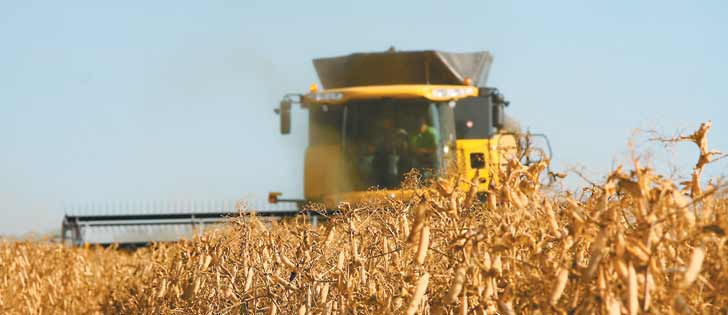Yellow peas an exception | Inevitable soybean drop will hurt prices
Pulse prices have held up nicely compared to competing crops in the post-harvest period, but trouble could be looming for one pulse, says an industry analyst.
“I’m a little nervous about yellow peas,” said Chuck Penner, an analyst with LeftField Commodity Research.
Yellow pea prices have been propped up by strong feed pea prices, which in turn have been supported by soy meal prices, another protein-based feed ingredient.
“If you look at any of the major commodities, soy meal has far outperformed anything else,” he said.
Read Also

Critical growing season is ahead for soybeans
What the weather turns out to be in the United States is going to have a significant impact on Canadian producers’ prices
Penner and other analysts feel it is only a matter of time before soy meal prices soften, given the prospects for a massive South American soybean harvest and another big crop expected to go in the ground in the northern hemisphere.
“That market is going to drop, and so any support that was under feed peas will drop, which will also drop yellow edibles,” he said.
“It hasn’t happened yet, but there’s the warning.”
Soy meal prices are already being pressured lower by slumping distillers grain prices, a competing feed ingredient.
Distillers grain prices are fell last week because China recently rejected 758 tonnes of U.S. product because it contained an unapproved line of genetically modified corn. Exporters are nervous about shipping the feed ingredient to that country.
Pulse prices have held their own in the post-harvest period compared to wheat and canola. Penner said it is partially because speculator money has exacerbated the downfall in futures traded crops.
The supply and demand picture is also better for pulses. Agriculture Canada is forecasting a 144 percent increase in 2013-14 ending stocks for grains and oilseeds compared to a 54 percent increase for pulses and special crops.
Penner said that is a function of a bigger acreage response in canola and wheat last year and stunning yields compared to pulses.
Stat Publishing analyst Brian Clancey expects farmers will be interested in planting more peas and lentils this year as long as crop movement remains decent before planting and prices stay strong.
He believes pulse prices will eventually fall back into line with competing crops, but that might not happen until 2014-15.
A lot will depend on demand, and as usual India is the big wild card. Many analysts are expecting a plentiful rabi (winter season) pulse crop in that country. Plantings are three percent ahead of last year’s pace, and soil moisture is good. However, there have been reports of frost damage.
Demand from India slumped during the first part of 2013-14 because of a large summer crop and currency problems. The slack has been picked up by the Middle East, where Syria had a crop failure. Clancey is uncertain about how much demand to expect from the Middle East in the second half of the crop year.
He believes Canadians will plant more pulses this year, but he isn’t expecting a huge increase. The few new crop bids that are available are at a discount to spot prices.
Larry Weber of Weber Commodities is forecasting at least 3.55 million acres of peas, up from 3.29 million acres last year. He expects 2.8 to three million acres of lentils, up from 2.39 million acres in 2013.
Weber expects the increases in pulse acres to come at the expense of wheat, which farmers are having trouble moving.
Penner doesn’t anticipate a huge swing in acres. He has done preliminary gross margin calculations for the crops farmers plant in Western Canada, and yellow peas and lentils rank near the middle of the pack.
He also believes farmers have long memories when it comes to growing pulses.
“Lentil growers and pea growers have seen the damage that’s done from big acreage swings and would be nervous about that same kind of thing happening again,” said Penner.


















